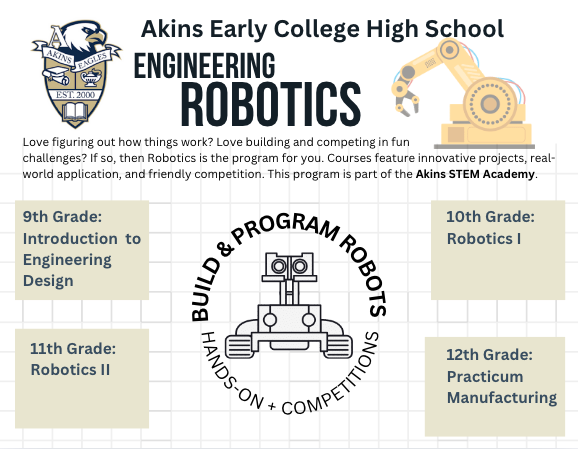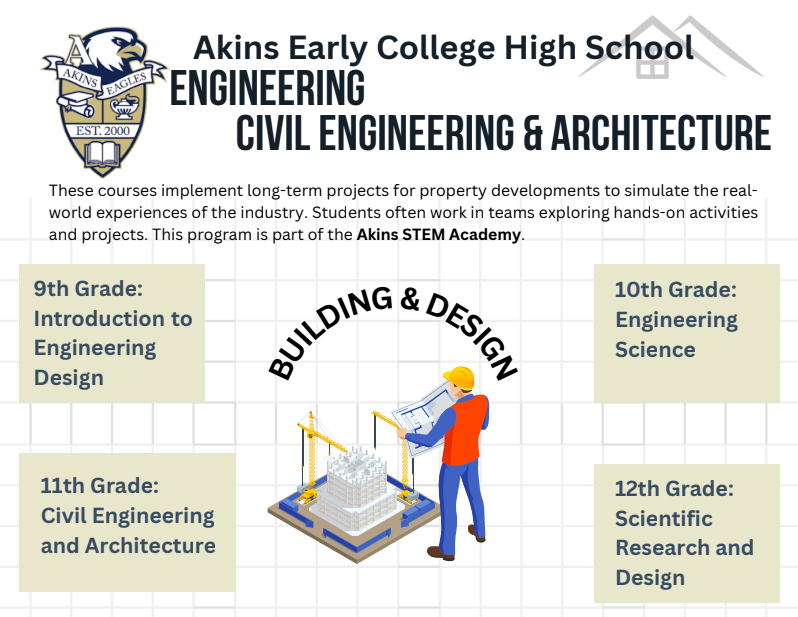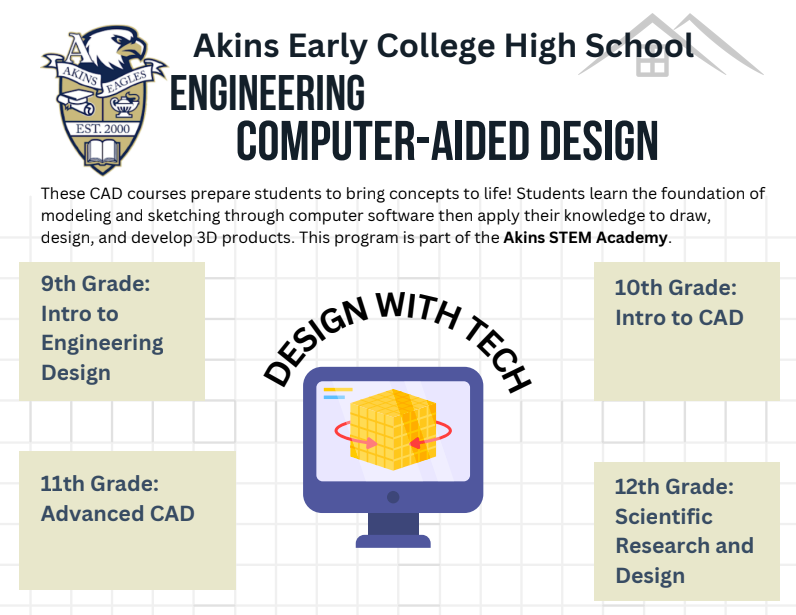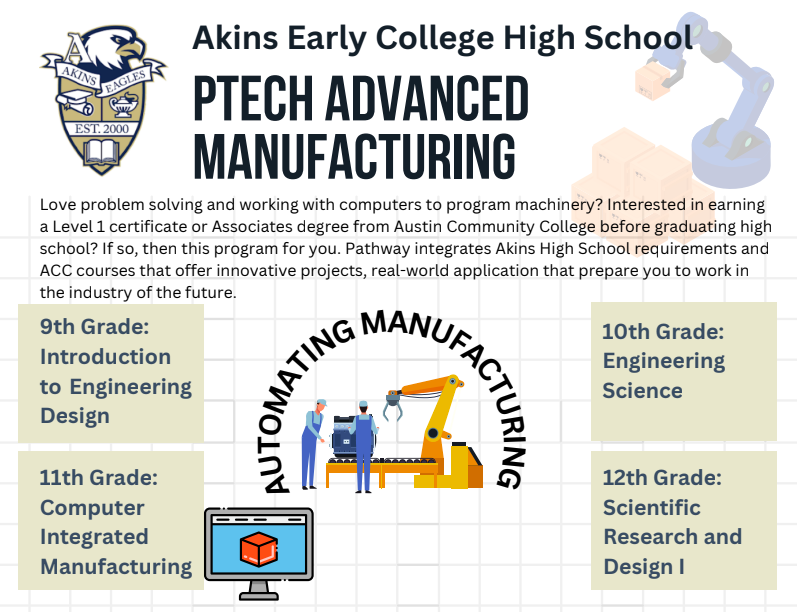Akins High School has seven different academies, each focused on different career interests. Every Akins student chooses their academy before their 9th-grade year based on their interest. All of the engineering classes are housed in the STEM Academy. The STEM Academy is open and free to all students, regardless of past experience or test scores.
The Akins STEM Academy offers five different engineering pathways including the Advanced Manufacturing P-Tech pathway. Except for the future P-Tech pathway, students take one STEM elective class in an elective pathway in addition to a student's regular core classes. When a student completes all four STEM electives in their pathway, they get a graduation distinction called an endorsement and a special cord to wear at graduation. Below is a brief description of the courses within each engineering pathway.
Summary of STEM Academy Programs of Study (also detailed below)
Summary of Program Course Progression (also detailed below)
Robotics and Automation Tech
Robotic classes are integrated into most engineering pathways. This sequence of courses will teach students the fundamentals of engineering as well as give students in-depth experience using Vex Robotics. The pathway culminates in students creating autonomous robots that compete against robots from other schools.

Biomedical Science Pathway
The PLTW Biomedical Engineering Pathway is a sequence of four courses that follows the PLTW Engineering Program’s proven hands-on, real-world problem-solving approach to learning. Students explore the concepts of human medicine and are introduced to bioinformatics, including mapping and analyzing DNA. Through activities, like dissecting a heart, students examine the processes, structures, and interactions of the human body – often playing the role of biomedical professionals to solve mysteries. Think CSI meets ER. They also explore the prevention, diagnosis, and treatment of disease working collaboratively to investigate and design innovative solutions for the health challenges of the 21st century such as fighting cancer with nanotechnology. In their senior year, students create their own research projects and have the ability to earn college credit from the University of Texas.

Civil Engineering & Architecture Pathway
The main focus of this pathway is completing long-term projects that involve the development of property sites. As students learn about various aspects of civil engineering and architecture, they apply what they learn to the design and development of a property. The course provides teachers and students the freedom to develop the property as a simulation or for students to model the experiences that civil engineers and architects face. Students work in teams, exploring hands-on activities and projects to learn the characteristics of civil engineering and architecture. In addition, students use 3D design software to help them design solutions to solve major course projects. Students learn about documenting their projects, solving problems, and communicating their solutions to their peers and members of the professional community of civil engineering and architecture. In their senior year, students can participate in an internship with Austin-based architecture firm BLGY as they redesign and construct nearby Blaizer Elementary.

Computer-Aided Design & Drafting
CAD courses prepare students to bring concepts to life! Students learn the foundation of modeling and sketching through computer software then apply their knowledge to draw, design, and develop 3D products.

Advanced Manufacturing PTECH
Students learn how to use of innovative technologies to create existing products and the creation of new products. Advanced manufacturing can include production activities that depend on information, automation, computation, software, sensing, and networking.

Most engineering classes use Project Lead the Way (PLTW) curriculum. Course descriptions above come from the PLTW website. More information on the engineering curriculum can be found on the PLTW engineering website.